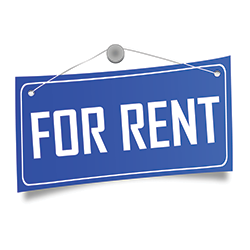|
exhibiting 101
 Tips for Smooth Setups
Ensure an on-time, on-budget, and hassle-free install by following these pieces of been-there, built-that advice. By Betsy Earle
Even if you're sure to have the snazziest booth on the show floor, without a properly prepared installation-and-dismantle team, things can go into disarray rather quickly. When I first started in the trade show industry, I didn't understand the implications of failing to come up with a detailed I&D plan and faced a harsh reality when my exhibit house surprised me with an I&D bill that was $17,000 over the budgeted amount. Fifteen years ago, that was – and still is – a lot of money, and it required a heck of a lot of explaining to my former boss. To keep you from ending up in a similar predicament, here are my tips for managing the I&D process so it goes smoothly.
Think twice about going DIY on I&D. While I understand that exhibitors showing in 10-by-10s or using pop-up exhibitry are often tempted to set up their exhibits themselves to cut costs, I've seen too many instances in which this budget-minded tactic has backfired. Remember that the whole point of being at a trade show is to sell your product or service, and sometimes saving money via a DIY install costs you in terms of your staff's time and energy. Before you set a couple of untrained sales reps loose with a hex wrench and a crate packed to the brim with disassembled lightboxes and counters, consider the outlay of putting them up in a hotel for an extra day or two and paying the direct cost of their time on the show floor versus hiring two laborers for four hours. The difference may surprise you. Be sure the crew specializes in your type of build, and schedule your I&D as soon as you can. Not all I&D crews are created equal, as some specialize in custom booths and others in modular systems. There are a few ways to procure I&D labor. You might work with a large exhibit house that has its own full-time crews in popular trade show locales, or the exhibit house may outsource setup and teardown responsibilities to a third party. In the latter case, the I&D crew will likely be familiar with a wider variety of exhibit systems than one that works with a single exhibit house. Some exhibitors opt to hire their own outside I&D contractors, while others schedule labor through the show's general service contractor (GSC). Each option is valid depending on the circumstances and application, so don't be too quick to discount one choice over another. For example, if you work with your own I&D team, either through a partner company or an exhibit house, labor will often be invoiced at a four-hour minimum. Some GSCs, on the other hand, will offer I&D teams with shorter minimums. However, before you blindly accept the crew assigned to you, ask questions to determine the team's familiarity with your particular system or setup. In regard to scheduling labor early, union laborers are essentially picked by ranking, much like in highschool gym class. The most seasoned guys and gals are selected and scheduled first, followed by the people with less knowledge and experience. If you place your I&D order sooner rather than later, you'll be higher on the list and have a better pick. Confirm that the I&D crews you're considering are authorized to work in the venue. There are some companies out there that will try to sell you workers from a labor pool that is not allowed to work in a unionized venue. While every city and venue has varying policies when it comes to who has jurisdiction over what, know that there is no such thing as a "universal" union card and that each individual laborer needs to be cleared to work in a particular city. When setting up your outsourced labor, you will be required to submit an Exhibitor Appointed Contractor form stating that your crew is allowed to work in the jurisdiction of the venue and that it is insured. If show management determines that your laborers aren't authorized, you will likely be forced to use GSC-appointed labor at the prevailing rate stated in the exhibitor services manual. Share your relevant setup documents as early as possible. It's essential to review your computer-aided design (CAD) files and setup diagrams with your I&D team lead early in the planning process in order to stick to your established budget, determine how long it will take to install your exhibit, and enable your I&D partner to select the right team for your project. He or she should be able to look at your CAD with you, go through the various components, and come up with an estimate for both the setup time frame and cost. If you start this process far enough in advance of the show, you'll give yourself time to address any curveballs – say, a wildly high quote to erect a complicated structure or a setup schedule that would necessitate overtime labor rates. My theory is that it is better to provide an I&D crew with too much information versus not enough, so in addition to your CAD files, provide your graphic layouts, inbound and outbound shipping information, and confirmations for any services ordered through the GSC or a third party, e.g., electrical, audiovisual and furniture rentals, etc. Finally, if you plan to have a rep on site to supervise setup, share his or her contact info as well.
Sometimes scheduling fewer laborers over a longer time
Review the show's target schedule to maximize the number of hours worked on straight time. Large trade shows frequently offer a target schedule of install days that lists the window during which you can start setting up your booth. If you have the option to start on a Sunday but your show opens on a Wednesday – and you really don't need three days to install your exhibit – you might opt to begin setup on Monday to avoid paying overtime for labor. Depending on the venue's labor rates, you could save almost $100 per hour per laborer by working solely on straight time.frame is more efficient than filling the booth with a large crew. Orchestrate your setup schedule to minimize downtime. An exhibit is like a theatrical production, and it literally needs its own playbook to ensure everything comes together as planned. If your I&D crew shows up but the carpet hasn't been laid by the GSC, you're going to blow your budget by having laborers cool their heels while on the clock. By collecting all the puzzle pieces and arranging them in one document, you can avoid having crews waiting for something that hasn't arrived. To that end, I put together what I call either a communications schedule or an implementation plan that includes a full rundown of the elements involved during install, e.g., exhibit setup, internet, rigging, electrical, plumbing, furnishings, etc., and when each of these needs to be executed to guarantee the stand is ready on time and on budget. Consider the law of diminishing marginal return. A larger crew is not necessarily a more effective one, and you cannot just add more proverbial cooks to the kitchen to get the job done faster. Sometimes scheduling fewer laborers over a longer time frame is more efficient than filling a booth with a large, time-crunched crew. If you have a short setup window and a large exhibit, try to break the booth into pieces and assign tasks accordingly. Ideally, you want to maximize the straight-time windows in which to do the bulk of your work and use smaller crews for after hours or early mornings to tweak and finalize everything. Remember that using cheap furnishings can be a false economy. Whenever possible, avoid trying to save money by purchasing inexpensive furniture, shelving, etc., that requires on-site assembly. No matter how many people you have screwing together your budget-priced finds, this is one way to make your I&D invoice skyrocket. A freestanding shelving unit from Target or Ikea may only set you back $45, but paying two laborers $108 an hour each to build it will ultimately cost you many times that amount. A carefully thought-out setup strategy can operate like a well-oiled machine if you plan accordingly and do your homework before you get to the show. And the more prepared you are on site, the calmer you and your setup crew will be – which will put you in a better position to achieve every exhibitor's end goal: staying on budget and getting things done as efficiently as possible. E  Betsy Earle, CTSM
Betsy Earle, CTSMmanaging director and founder of Event Driven Solutions LLC. Earle obtained her MBA at the University of Miami and earned her Diamond-level CTSM designation in 2018. Exhibiting101@exhibitormagazine.com
|
|
|
||||||||||||||||||||||||||||
|
|
||||||||||||||||||||||||||||
|
TOPICS Measurement & Budgeting Planning & Execution Marketing & Promotion Events & Venues Personal & Career Exhibits & Experiences International Exhibiting Resources for Rookies Research & Resources |
MAGAZINE Subscribe Today! Renew Subscription Update Address Digital Downloads Newsletters Advertise |
FIND IT Exhibit & Display Producers Products & Services All Companies Get Listed |
EXHIBITORLIVE Sessions Certification Exhibit Hall Exhibit at the Show Registration |
ETRAK Sessions Certification F.A.Q. Registration |
EDUCATION WEEK Overview Sessions Hotel Registration |
CERTIFICATION The Program Steps to Certification Faculty and Staff Enroll in CTSM Submit Quiz Answers My CTSM |
AWARDS Sizzle Awards Exhibit Design Awards Portable/Modular Awards Corporate Event Awards Centers of Excellence |
NEWS Associations/Press Awards Company News International New Products People Shows & Events Venues & Destinations EXHIBITOR News |
||||||||||||||||||||
|
||||||||||||||||||||||||||||






